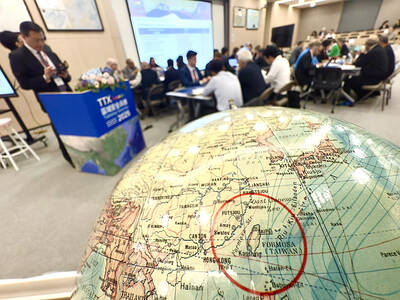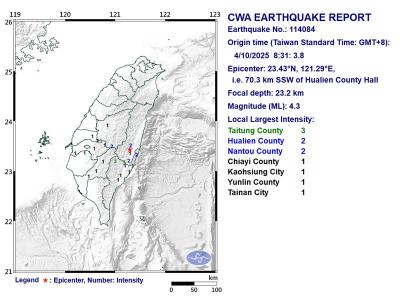Regulations on travel from Taiwan to China via Kinmen and Matsu will be relaxed as early as this week to facilitate the development of the outlying islands, Executive Yuan Secretary-General Chen Chin-jun (陳景峻) said yesterday.
Direct cross-strait travel is still restricted to a ferry service between the offshore islands and China's Fujian Province, also known as the "small three links," which was implemented in January 2001.
Travel agencies in Kinmen and Matsu will be allowed to advertise the route from China to Taiwan via the "small three links" to Chinese and to allot the same number of Taiwanese to travel to China via the route, Chen said.
The expansion plan of the "small three links" service will be implemented on the condition that people traveling between the two countries spend at least one night in Kinmen or Matsu to boost the local economy, he said.
Initially, the service was available only for residents of Kinmen or Matsu wishing to visit China, while Chinese citizens could enter the offshore islands to conduct business or visit as tourists.
With gradual expansion of the scheme over the years, people with addresses registered in Kinmen and Matsu for at least six months, businesspeople with operations in China and their employees and family members, veterans originally from China and Fujian Province residents married to Taiwanese are now allowed to travel to China via the route.
The island county of Penghu was also included in the "small three links" arrangement last year.
Applications filed by residents of Taiwan proper to travel to China via the offshore islands will be reviewed by the government on a case-by-case basis.
"Many people from Penghu and Taiwan proper didn't stay overnight in Kinmen or Matsu when using the `small three links' route, contributing little to the local economy," Chen said.
The Mainland Affairs Council will present a proposal regarding the expansion this week and expects to get a green light from the Cabinet before March 22 presidential election at the latest, he said.

DEFENSE: The National Security Bureau promised to expand communication and intelligence cooperation with global partners and enhance its strategic analytical skills China has not only increased military exercises and “gray zone” tactics against Taiwan this year, but also continues to recruit military personnel for espionage, the National Security Bureau (NSB) said yesterday in a report to the Legislative Yuan. The bureau submitted the report ahead of NSB Director-General Tsai Ming-yen’s (蔡明彥) appearance before the Foreign and National Defense Committee today. Last year, the Chinese People’s Liberation Army (PLA) conducted “Joint Sword-2024A and B” military exercises targeting Taiwan and carried out 40 combat readiness patrols, the bureau said. In addition, Chinese military aircraft entered Taiwan’s airspace 3,070 times last year, up about

The Overseas Community Affairs Council (OCAC) yesterday announced a fundraising campaign to support survivors of the magnitude 7.7 earthquake that struck Myanmar on March 28, with two prayer events scheduled in Taipei and Taichung later this week. “While initial rescue operations have concluded [in Myanmar], many survivors are now facing increasingly difficult living conditions,” OCAC Minister Hsu Chia-ching (徐佳青) told a news conference in Taipei. The fundraising campaign, which runs through May 31, is focused on supporting the reconstruction of damaged overseas compatriot schools, assisting students from Myanmar in Taiwan, and providing essential items, such as drinking water, food and medical supplies,

A magnitude 4.3 earthquake struck eastern Taiwan's Hualien County at 8:31am today, according to the Central Weather Administration (CWA). The epicenter of the temblor was located in Hualien County, about 70.3 kilometers south southwest of Hualien County Hall, at a depth of 23.2km, according to the administration. There were no immediate reports of damage resulting from the quake. The earthquake's intensity, which gauges the actual effect of a temblor, was highest in Taitung County, where it measured 3 on Taiwan's 7-tier intensity scale. The quake also measured an intensity of 2 in Hualien and Nantou counties, the CWA said.

New Party Deputy Secretary-General You Chih-pin (游智彬) this morning went to the National Immigration Agency (NIA) to “turn himself in” after being notified that he had failed to provide proof of having renounced his Chinese household registration. He was one of more than 10,000 naturalized Taiwanese citizens from China who were informed by the NIA that their Taiwanese citizenship might be revoked if they fail to provide the proof in three months, people familiar with the matter said. You said he has proof that he had renounced his Chinese household registration and demanded the NIA provide proof that he still had Chinese